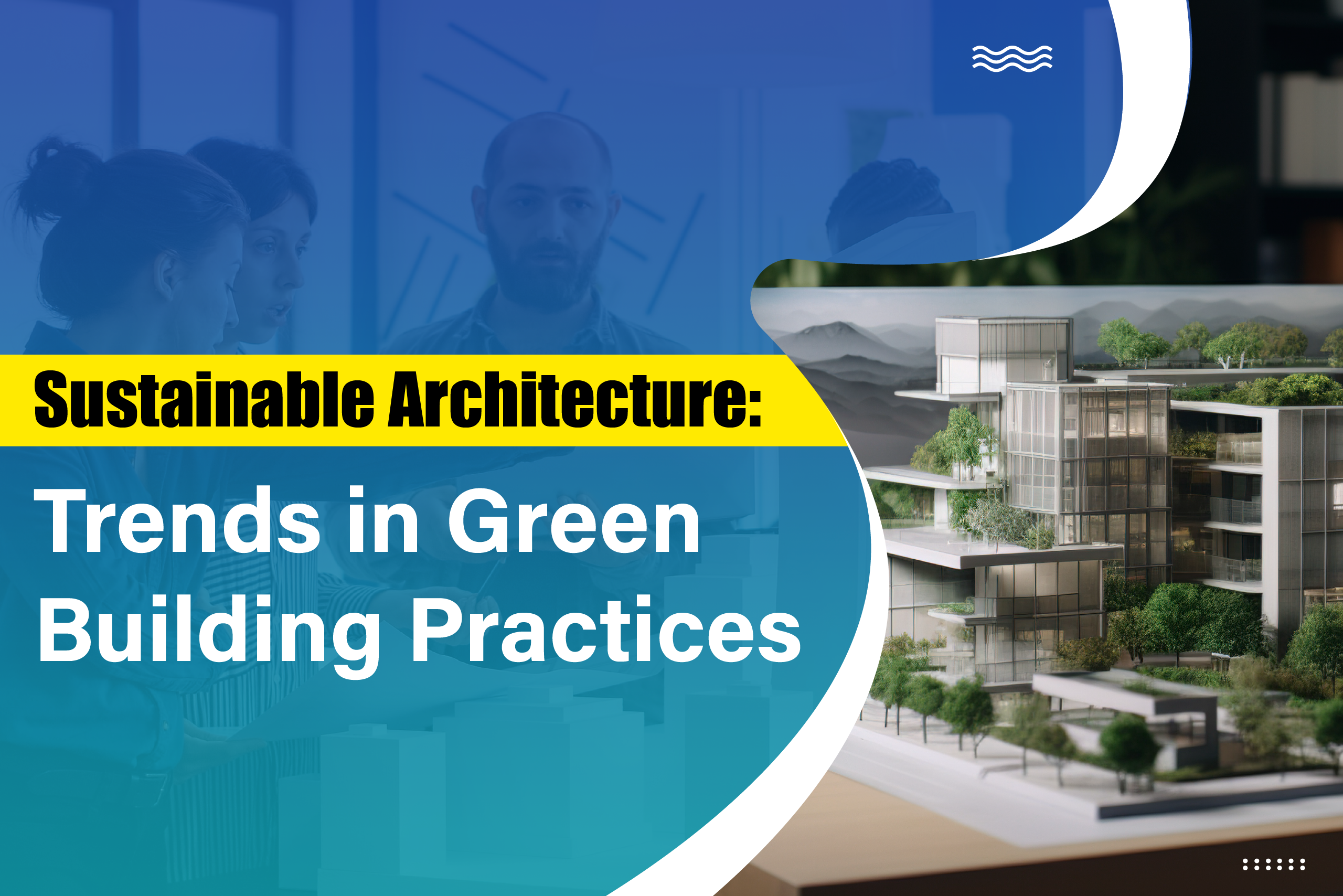
Sustainable Architecture: Trends in Green Building Practices
In the era of weather exchange and environmental consciousness, sustainable architecture is not a trend but a need. With cities increasing and global warming intensifying, the way we design and construct our areas drastically affects the surroundings. By implementing eco-friendly strategies and innovative solutions, sustainable architecture strives to create practical but responsible homes. Let’s explore the interesting tendencies shaping inexperienced constructing practices today.
1. Renewable Energy Integration
The use of renewable energy in architecture is one of the most essential pillars of sustainable architecture. Solar panels, windmills, and geothermal structures have started to become normal functions in buildings of the cutting-edge international.
These power resources reduce carbon footprints and decrease operational costs in the end. Imagine a skyscraper powered by the sun or a suburban home harnessing geothermal electricity to remain cozy in wintry weather—that is the strength of inexperienced design!
2. Energy-Efficient Buildings
Energy performance is the hallmark of green construction practices. Architects nowadays layout spaces that permit minimal electricity wastage through green insulation, excessive-overall performance windows, and clever light systems. This upward thrust in strength-green buildings makes it positive that no longer a single watt of strength is going to waste. Coupled with smart electricity structures, those designs are paving the way for a greener future.
3. The LEED Certification Revolution
LEED certification has come to be something of a gold fashion in sustainable architecture. A globally identified benchmark, it measures buildings on parameters that include energy utilization, water conservation, and cloth sustainability. Be it a company workplace or a cozy condo, a LEED-licensed structure stands as a testament to the proprietor’s dedication to eco-friendly dwelling.
4. Carbon-Neutral Design
The concept of lowering a construction’s carbon emissions to zero would possibly sound like a pipe dream, however, carbon-impartial design is making it a truth. Architects and engineers are actually the use of advanced modeling tools and sustainable construction substances to offset emissions for the duration of both production and operation. sustainable architecture is main the way this combat climate change—from urban excessive-rises to small-metropolis libraries.
5. Passive Solar Design
The ingenuity of the passive sun layout is that it harnesses the electricity of the sun without counting on complicated technology. The concept is to use constructing orientation, thermal mass, and strategic window placement to warmness and cool areas. Architects can reduce electricity consumption and nevertheless maintain comfortable interiors by using daylight effectively. It is the right aggregate of simplicity and sustainability.
6. Green Roofing Solutions
When we think about roofs, we generally tend to think about flat, uninteresting surfaces. Green roofing solutions trade those spaces into living ecosystems. Green roofs offer insulation, reduce urban warmness islands, or even create a quiet area for residents. From city farms to lush network gardens, those improvements are redefining the skyline.
7. Biophilic Architecture: Bringing Nature Indoors
Sustainable architecture is not the most effective approximately decreasing emissions but additionally about reconnecting human beings with nature. The biophilic architecture integrates natural factors which include plant life, water capabilities, and natural shapes into the layout. This now not the most effective improves air best and also boosts intellectual well-being. Imagine a busy office surrounded by indoor trees or a mall with cascading green walls—these spaces encourage and rejuvenate.
8. Modular and Prefabricated Construction
Fast to collect and environmentally pleasant, the fashion of modular and prefabricated construction is starting up in green building practices. By production components off-site, these strategies lessen waste and accelerate the building method. The result? Affordable, brilliant structures with minimal environmental impact. Whether it’s a tiny home or a big sanatorium, prefabrication is converting the sport.
The Role of Sustainable Construction Materials
At the heart of sustainable architecture is the usage of sustainable construction materials. From bamboo and reclaimed wood to recycled metal and urban, these substances reduce environmental degradation. Their sturdiness and aesthetic attraction make them a fave amongst eco-conscious designers.
Water Conservation in Architecture
Water is a precious useful resource, and saving it is very critical in the practices of inexperienced construction. Greywater recycling and rainwater harvesting systems, with low-drift furniture, are all becoming staples of modern layout. By incorporating the one’s functions, architects make certain that each drop counts.
Lifecycle Assessment of Buildings
Truly sustainable buildings recall everything of their lives. A lifecycle evaluation of buildings calculates their impact on the surroundings from construction via demolition. Architects can make knowledgeable selections maximizing sustainability at every segment from this expertise of the lifecycle.
Conclusion
The world of sustainable architecture is dynamic, innovative, and cause-pushed. By following green building practices, we can be capable of creating areas that display recognition for the planet while increasing the pleasantness of human lifestyles. Whether it be the integration of renewable energy, the magic of biophilic architecture, or the efficiency required in modular and prefabricated production, the future of structure will surely be inexperienced. Together, we will create a global in which splendor and sustainability cross collectively hand in hand, one structure at a time.
If you’re thinking about a new task or renovation, why no longer explore the exciting opportunities of sustainable architecture? The planet will thank, and so will future generations.
